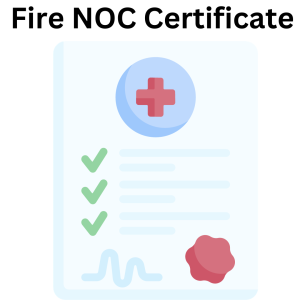![]()
Fire Immuniser
+91-7829629111
Email: info@variex.in
Varistor Technologies Pvt. Ltd.
Block-1, First Floor, Ardente Office One, Hoodi Circle, ITPL Main Road, Bengaluru, Karnataka 560048, IN
Fire NOC For Hospital
Fire safety is a paramount concern in any facility, but it takes on even greater significance when it comes to hospitals. With their complex infrastructure, a large number of patients, and critical life-saving operations, hospitals must have robust fire safety measures in place. The fire No Objection Certificate (NOC) serves as an essential document, confirming that a hospital has met all necessary fire safety requirements. In this article, we will delve into the importance of fire NOC for hospitals, the process of obtaining it, and the steps involved in ensuring comprehensive fire safety within hospital premises.
The Significance of Fire NOC for Hospitals
A fire NOC acts as proof that a hospital has implemented all necessary fire safety measures prescribed by the local fire department or other regulatory authorities. It ensures that the hospital has the necessary equipment, emergency response plans, and trained staff to prevent, detect, and control fire outbreaks effectively. Obtaining a fire NOC is a legal requirement, and hospitals without this certification may face legal consequences and penalties.
The Process of Obtaining a Fire NOC for Hospitals
Obtaining a fire NOC for a hospital involves a systematic process that verifies compliance with fire safety standards. The following steps outline the typical process:
1. Audit and assessment:
The hospital administration should conduct a comprehensive audit of their fire safety infrastructure and systems. This includes evaluating the functionality of fire extinguishers, sprinkler systems, fire alarms, smoke detectors, and emergency exits. It also involves reviewing evacuation plans, fire drills, and ensuring that sufficient firefighting equipment is readily accessible.
2. Engagement with fire department:
Once the audit is complete, the hospital administration should contact the local fire department or relevant regulatory authority responsible for issuing the fire NOC. They will provide specific guidelines, forms, and documents required for obtaining the certification. It is vital to liaise closely with the fire department to understand and fulfill all the requirements.
3. Documentation and application submission:
The hospital must compile all necessary documents, including architectural plans, emergency preparedness plans, equipment maintenance records, and certifications for firefighting equipment, and submit them along with the completed application form to the fire department. These documents serve as proof that the hospital has implemented adequate fire safety measures.
4. Site inspection:
After receiving the application, the fire department will conduct a thorough inspection of the hospital premises. This inspection aims to verify the accuracy of the information provided in the application and ensure that the hospital meets all the required fire safety standards. They will pay attention to the placement and functionality of firefighting equipment, availability of emergency exits, appropriate signage, and adherence to fire-resistant materials.
5. Compliance and rectification:
If any non-compliance is identified during the site inspection, the hospital administration is required to rectify those issues promptly. It may involve updating or repairing fire safety equipment, modifying emergency exit routes, or conducting staff training programs. Once the necessary rectifications are made, the hospital can request another inspection to ensure full compliance.
6. Issue of fire NOC:
Once the hospital successfully completes all the requirements and rectifications, the fire department will issue the fire NOC. This certification indicates that the hospital has met all the fire safety standards and is fully prepared to tackle any fire-related emergencies.
Ensuring Comprehensive Fire Safety within Hospital Premises
While obtaining a fire NOC is crucial for hospitals, it is equally important to establish and maintain comprehensive fire safety measures throughout the premises. The following practices must be followed:
1. Regular inspections and maintenance:
Regular inspections of fire safety equipment and systems should be conducted to ensure they are functioning correctly. This includes fire extinguishers, sprinkler systems, smoke detectors, fire alarms, and emergency lighting. Adequate record-keeping of maintenance activities is essential for showcasing compliance during fire NOC inspections.
2. Staff training and drills:
Hospital staff, including doctors, nurses, and support staff, should receive thorough training on fire safety protocols and emergency response procedures. Regular fire drills should be conducted to ensure all staff are aware of their roles and responsibilities during a fire emergency, including patient evacuation procedures.
3. Adequate signage and evacuation plans:
Clearly marked emergency exits, evacuation routes, and firefighting equipment placements are crucial. All staff and patients should be familiar with the locations and usage of emergency exits. Evacuation plans should be prominently displayed throughout the hospital premises.
4. Fire-resistant infrastructure:
Hospitals should prioritize the use of fire-resistant materials in construction and renovation. Fire-resistant doors, walls, ceilings, and floors can significantly slow down the spread of fire, allowing more time for safe evacuation and firefighting operations.
5. Regular review of emergency response plans:
Emergency response plans should be regularly reviewed and updated to align with new fire safety standards, changes in hospital infrastructure, and lessons learned from real incidents. Continuous improvement and learning from past experiences ensure a hospital's fire safety measures remain up to date and effective.
Conclusion
Fire safety is crucial in hospitals due to the potential risks to human lives and the complex infrastructure involved. Obtaining a fire NOC is a legal requirement for hospitals to showcase compliance with fire safety standards. The process of obtaining this certification involves auditing, engaging with the fire department, documenting compliance, site inspections, and rectification of any non-compliance. However, obtaining a fire NOC is just the first step. It is equally important to establish and maintain comprehensive fire safety measures within hospital premises, including regular inspections, staff training, adequate signage, fire-resistant infrastructure, and continuous review of emergency response plans. By prioritizing fire safety and preparedness, hospitals can ensure the well-being and safety of all individuals within their premises.
Final Say
At VariEx.in , we excel in navigating the intricacies of Fire NOC processes. Our expertise extends to designing, installing, inspecting, and rectifying automatic sprinkler systems. With our proficient in-house team, we offer comprehensive fire sprinkler services tailored to your needs, ensuring both quality and affordability.
Whether your project is extensive or compact, we stand ready to fulfill your Fire NOC requirements. To initiate a Fire NOC consultation or explore how our services can enhance the safety of your premises, reach out to us online or contact us at 7829629111. We are committed to delivering reliable solutions for your fire safety needs.










